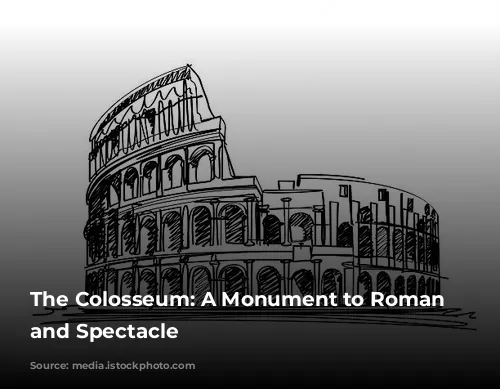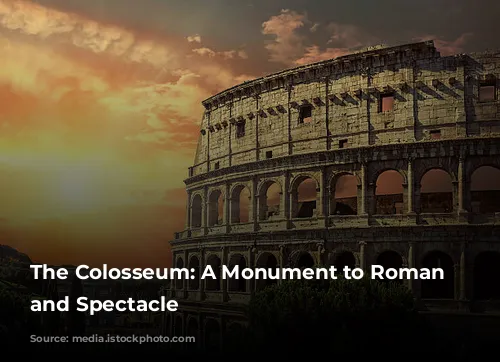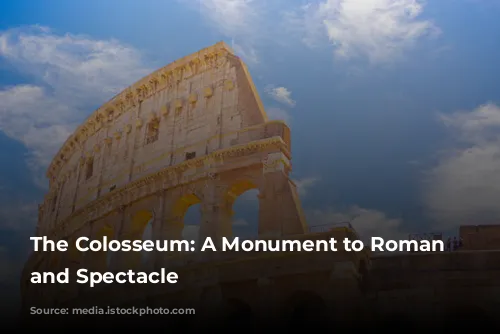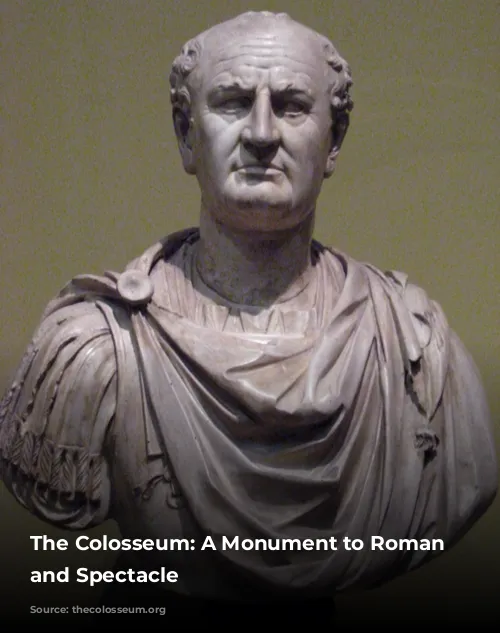The Colosseum, a colossal structure etched into the fabric of history, stands as a testament to the grandeur and brutality of the Roman Empire. This iconic amphitheater, with its nearly two thousand years of existence, has witnessed countless spectacles that shaped the lives and imaginations of generations.
The Colosseum is much more than a pile of stones; it is a living museum, a window into a world long gone. Today, millions of tourists journey to Rome each year to marvel at its imposing presence, eager to unlock its secrets and glean insights into the lives of the Romans who walked its hallowed grounds.
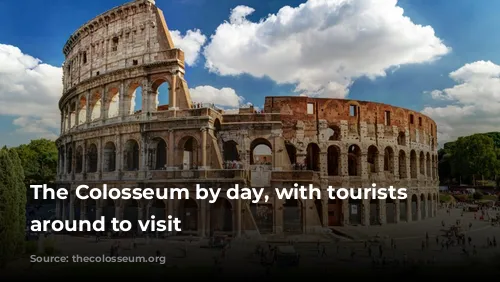
Construction and Legacy
The construction of the Colosseum commenced in 72 AD under Emperor Vespasian, who envisioned a grand amphitheater to entertain and awe the Roman populace. While Vespasian laid the foundation, the Colosseum’s completion in 80 AD fell to his sons, Titus and Domitian. The labor force behind this monumental endeavor consisted of Jewish slaves, forced into servitude following the sacking of Jerusalem. An estimated 60,000 to 100,000 individuals labored tirelessly to construct the colossal amphitheater, their efforts forever intertwined with the Colosseum’s legacy.
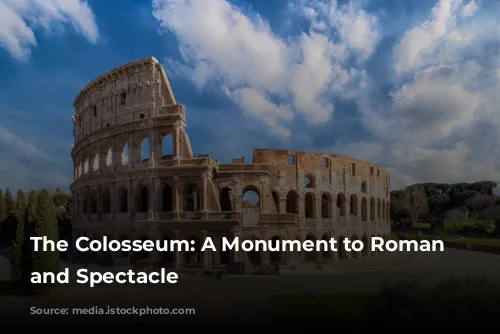
The Purpose of Power
The Colosseum’s very existence was a calculated move by the Roman emperors. After the Great Fire of 64 AD, Emperor Nero had erected a lavish palace, the Domus Aurea, on the site where the Colosseum now stands. This extravagance ignited the ire of the Roman citizens, who were already weary of Nero’s tyranny.
When Vespasian ascended to the throne, he demolished Nero’s palace, a symbolic act of rejection of Nero’s reign. In its place, Vespasian built the Colosseum, a symbol of his commitment to the people, a grand spectacle designed to unify and entertain.
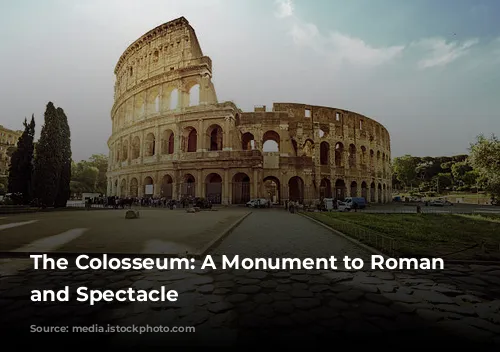
A Name Etched in Stone
The Colosseum, initially known as the Flavian Amphitheater, owes its present name to the colossal bronze statue of Emperor Nero that once stood nearby. The statue, a replica of the Colossus of Rhodes, was a testament to Nero’s power and ambition. While the statue has long vanished, the name “Colosseum,” derived from its colossal presence, endures, echoing through the ages.
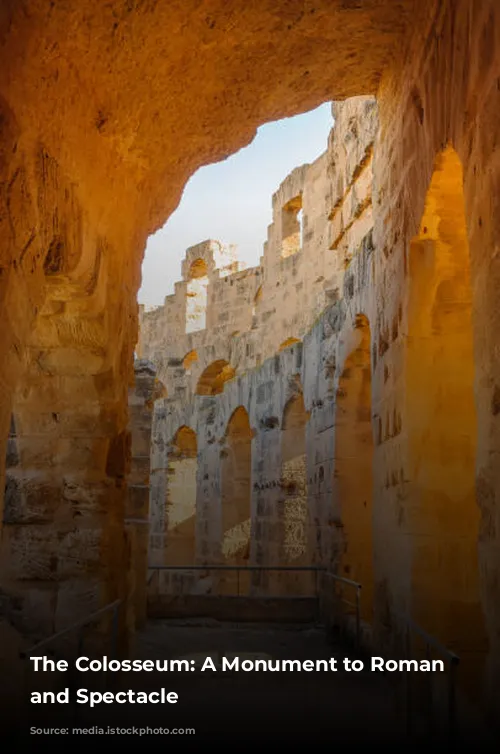
A Symphony of Stone and Design
The Colosseum’s grandeur is not just in its size, but in its intricate design. The oval-shaped amphitheater spans 189 meters long, 156 meters wide, and 48.5 meters tall, encompassing a staggering 6 acres of surface area. Its 80 arches, adorned with three tiers of Doric, Ionic, and Corinthian columns, create a mesmerizing spectacle, a testament to Roman architectural brilliance.
The 76 numbered arches acted as guides for the Roman populace, ensuring a smooth flow of spectators to their designated seats. Even today, the remaining 31 arches, weathered by time but standing strong, provide a glimpse into the Colosseum’s ancient glory.
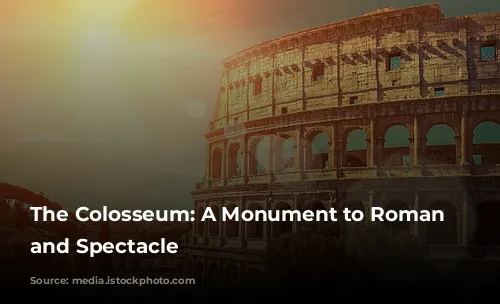
The Colosseum’s Unseen Depths
Beneath the Colosseum’s impressive exterior lies a hidden world—the Hypogeum. This intricate network of tunnels and chambers served as a staging area for gladiators, animals, and prisoners. 80 vertical shafts connected the Hypogeum to the arena, allowing for the swift and dramatic deployment of the spectacle’s participants. Trap doors cleverly disguised within the arena floor provided an element of surprise, adding to the dramatic flair of the performances.
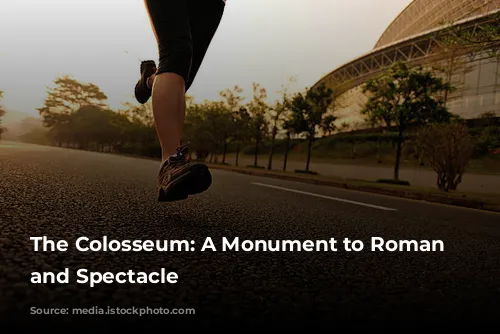
A City Within a City
The Colosseum’s immense size allowed it to accommodate between 50,000 and 80,000 spectators, transforming it into a bustling city during its peak. The sheer scale of the events staged within its walls is awe-inspiring, prompting us to contemplate the emotions and experiences of the crowds who once thronged these hallowed grounds.
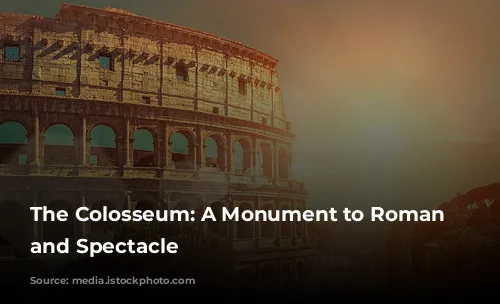
The Shadow of Death
The Colosseum, a symbol of Roman entertainment, also served as a stage for bloodshed and death. Over 350 years of operation, an estimated 400,000 individuals perished within its walls, including gladiators, slaves, convicts, prisoners, and performers. The arena became a stage for the display of power and brutality, with a grisly ballet of death playing out before the eyes of the cheering crowds.
The Colosseum was not just a venue for gladiatorial combat, but also hosted staged hunts, executions, and even naval battles. Animals from far and wide—lions, tigers, wolves, bears, elephants, crocodiles, giraffes, and even hippopotamuses—were brought to Rome to participate in these spectacles, many meeting their demise in the arena.
The Colosseum’s role in animal exploitation and eradication underscores the brutal nature of the Roman Empire and its insatiable desire for spectacle.
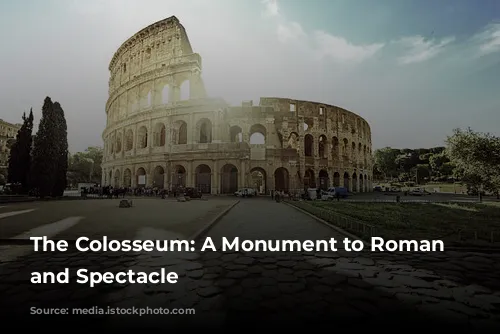
The Reality Behind the Myths
Gladiator fights, often portrayed as chaotic bloodbaths, were more akin to contemporary boxing matches. Fighters were categorized by size and fighting style, with referees and doctors monitoring the contests. While many gladiators met their end in the arena, some achieved stardom, enjoying long careers and surviving numerous battles. The truth about gladiatorial combat lies somewhere between the romanticized image of heroic warriors and the gruesome free-for-all often depicted.
The stories of Christian martyrs being executed in the Colosseum, while compelling, lack conclusive historical evidence. While many perished within its walls, specific accounts linking Christian martyrs to the Colosseum are scarce.
The movie Gladiator, while entertaining, takes liberties with historical accuracy. Commodus, the emperor depicted in the film, was indeed a fan of gladiatorial combat and even participated in the arena himself. However, he often fought against handicapped or incapacitated opponents, a practice that earned him scorn and contempt from the Roman citizens. While Commodus was a cruel ruler, his death did not occur in a gladiatorial combat as depicted in the film.
Gladiators, though not officially slaves, were essentially property of their owners, deprived of their rights and freedom. They entered the arena, some by choice and others as punishment, their lives ultimately forfeit to the whims of their masters.
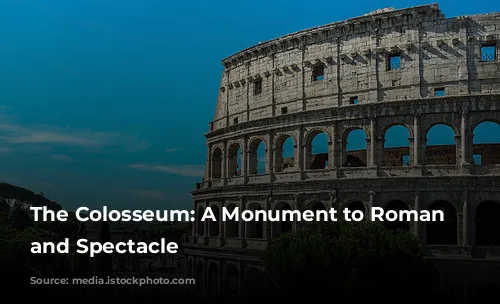
The End of an Era
The last recorded gladiator battles took place in 435 AD. The Colosseum continued to host hunts for approximately a century after, but the decline of the Roman Empire led to the eventual cessation of these spectacles. The Colosseum, once a symbol of Roman power, fell into disrepair, its grandeur slowly fading into the mists of time.
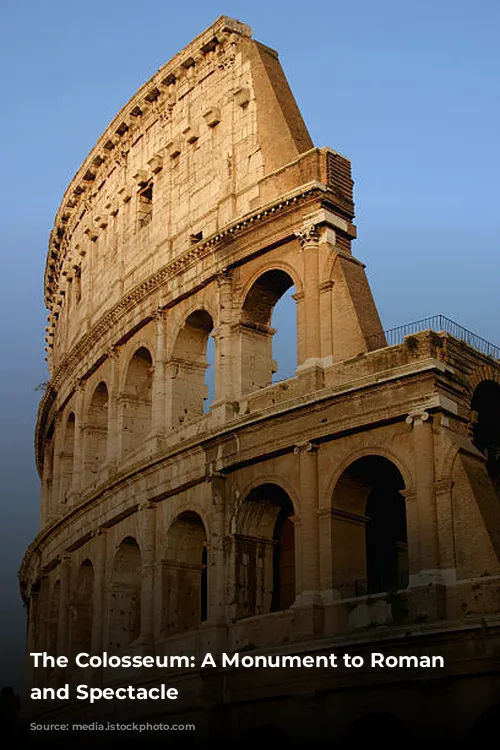
A Living Legacy
The Colosseum, though no longer a stage for gladiatorial combat, remains a powerful symbol of Roman history. It has endured fire, earthquake, and the passage of time, serving as a testament to the resilience of human endeavor. The Colosseum has been repurposed throughout the ages, serving as a cemetery, a place of worship, a home for artisans, and a fortified castle. Today, it stands as one of the world’s most visited landmarks, attracting over 7 million visitors annually.
The Colosseum is not just a relic of the past; it is a living testament to the power of history, a symbol of both the grandeur and the brutality of the Roman Empire. It reminds us that even in the darkest of times, the human spirit can rise, and the past can be a source of both fascination and inspiration.
